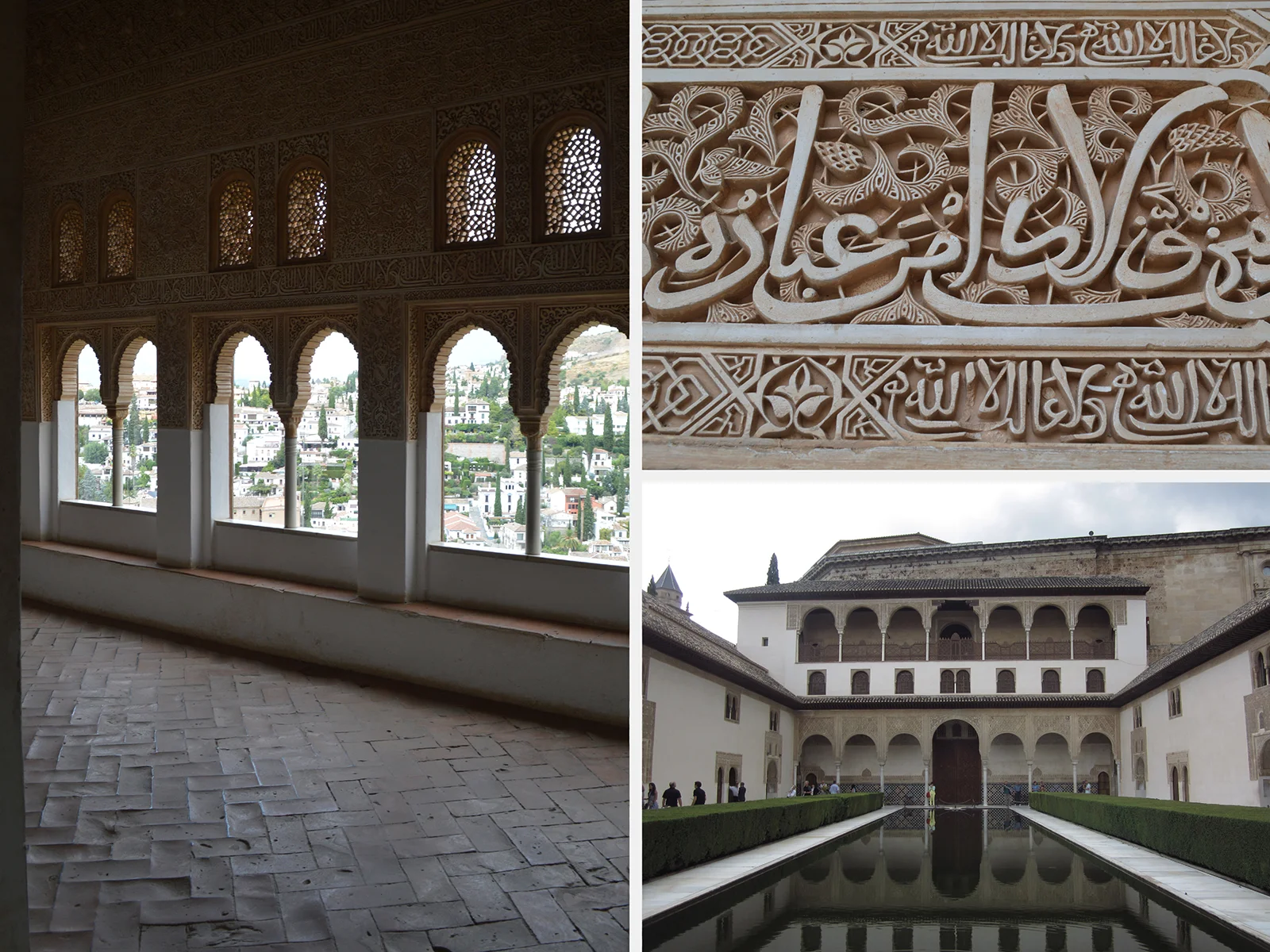Navigating Granada in a rental car is not my idea of a fun way to spend a hot, overcast day. We were on a family holiday in Andalucia at the end of September last year, staying in the village of Montejaque just outside Ronda and had driven for the best part of three hours (with me in the middle seat with what I can only imagine was on-coming surprise sciatica in my backside) to be greeted by the endlessly barren industrial landscape that so often seems to welcome you to even the most beautiful of European cities. The route up to the fortress took us via the newer side of the town, through a labyrinth of increasingly narrow, one-way pedestrianised streets, inconclusive arrow-based signage and dead ends, up to a wide road that snakes all too slowly away from the grey plain of cranes and scaffolding and pink and white cement. We reached the top only to descend again into a tarmac helter-skelter of miniature roundabouts, squashed fruit and escaping coaches to the tiered concrete car park leading down to the ticket office. And still no real sign of anything to make it all worthwhile.
To me, up until this point, the Alhambra had been a somewhat imaginary place. In my mind, prompted by some mention in a story tape we had growing up, it existed in the past as some romantic, opulent, Arabian pleasure palace where Sheherazade mooned around fountains in fashionable trousers and if I'd been pushed I probably would have had to admit I wasn't entirely sure if it had ever even existed in reality it was so exotic a concept to me (naturally I'd kept this quiet when the trip had been suggested. Less: "Oh the Alhambra's a real place not like Eldorado?" and more: "Always wanted to go there. So excited. Can't wait."). So, having discovered that my fantasy palace did, in reality, exist and having journeyed through at least half an Arabian night to get there it all felt like a bit of a let down and I could only think about ejecting myself from the middle seat (and getting some snacks out of the boot).
It was only free of the car park and the other side of the ticket office, walking in the heavy green light of the trees around the high stone walls to our entrance point (of which there are many, numbered, with timed entry slots) that I began to come out of my mood. Melanie was talking to me about the time she had visited as a teenager in the 60s with her mother when the palace was not often frequented by tourists and with this, and our now much improved view over old Granada, some of my previous glamorous expectations began to return.
The Alhambra Palace photo bottom right: Antonia Reed-Felstead
It was as though the lacklustre build up had been an intentional part of the act. The twenty minute queue finally gave and we entered through a high doorway into the first room. Small and relatively dark after the Spanish sunshine and understated, given what was to come, but utterly beautiful. The walls were clad with a peach coloured plaster and intricately carved with broad bands of Arabic script and geometric patterns. A row of arched windows framed a postcard view over the old city neatly cropping out any undesirable modern distractions save the backlog of tourists forming behind us craning for a peek. Again I wavered on my expectations of the outing but from here, the bottleneck of backpacks and bodies burst and we scattered out into an adjoining atrium, the first of many. Put simply: the palace fulfilled everything my childish imagination had concocted.
Pillars and stuccowork in the Court of the Lions
Pillars and stuccowork in the Court of the Lions
Floors, walls and ceilings inside the palace.
The palace is a vast theatrical Moorish magic show of high, internal domes, meticulously sculpted and staggered in impossibly complicated arrangements. Clusters of slim, elegant pillars soar upwards meeting in enormous honeycombed expanses of delicate stuccowork. Long, flat rectangular pools are fed by straight, silent rivulets running in the marble floors and everywhere you walk the walls reflect an even glossy light. In comparison, the walled gardens of the neighbouring Generalife with their flights of shallow steps, orange and cyprus trees, neat, bright green shrubs, arcing spurts of water and trailing vines seem wildly exotic and untamed. Every part has it's own individual character and proves a more elaborate and romantic a stage set than the last.
The Gardens of the Generalife photo: Melanie Reed-felstead left and Antonia right
Plants and flowers of the Generalife gardens
Our walk through the palaces and gardens seemed like a prolonged meditation conducted in near silence - extremely unusual let me tell you. The obligatory menaces a family holiday abroad brings evaporated. The uninvited wasp contingent, shock summer cold (every man down), the small but acutely effective clan of neighbouring diggers that casually kicked into life just as you'd got settled by the pool with all your bits and the petanque tournaments of profound significance evaporated and we became quiet and refined. No one swore, no one was bored or complained or sulked. Conversation was gentle and complimentary. The visit was therapeutic and tranquil if only until we crammed back into the car to drive home.
Dahlias in the Generalife gardens
The things we build up in our heads are so often the things most likely to disappoint but, for me, the Alhambra was built big and, surprisingly, has stayed that way. It had all the excitement and romance of the Arabian Nights and was over-the-top enough to satisfy the wild preconceptions of what I imagined to be a fairytale.








